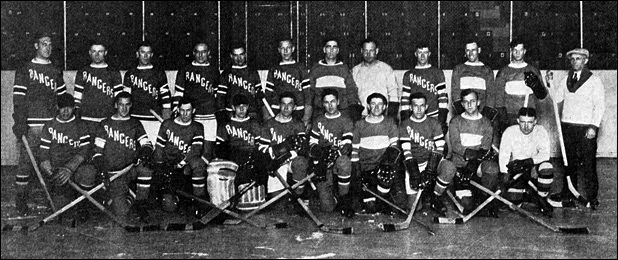Puck Luck: A Story of Two Stanley Cups
(photo: rangers.nhl.com)
It is 1928. The New York Rangers are two seasons old, sparkling from their phenomenal first season. They still share the Garden with the New York Americans, but they’re not playing there; the circus has taken over Madison Square, so every game of the Final will be played in Montreal. The Rangers are down 1-0 in a best-of-five series.
They don’t know it yet, but the next three games will be plagued with controversial reffing, injury, and painful shutouts.
But before all that, at the start of the second period of second game of the 1928 Stanley Cup Final, Lorne Chabot, the Rangers’ star goalie, leaves the ice with an eye injury.
There is no backup.
Two rounds ago, in 2014, the LA Kings were skating where the Rangers are now: down 3-0 and painfully aware that there was no more room for error or accident or bad luck. Absolutely everything must go your way with that kind of deficit. Puck luck, penalties, and the strange sports alchemy that sometimes bubbles up into Stanley Cup silver can take a team just as far as smart hockey, but you don’t get one without the other.
“You earn it,” Rangers goalie Henrik Lundqvist said on Tuesday. “You always say you earn your luck by working hard and making good decisions. I don’t know … we’re going to have to play really well and we’re going to have to rely on some luck. That’s just the way it goes. That’s the way the game is played.”
Lady Luck is fickle, but she’s not blind: to win the lottery, you have to first buy a ticket. Still, over the course of the last three games it seemed like despite having bought the whole convenience store, the Rangers couldn’t seem to cash in. They outshot the Kings 2-1 in the third game, which they lost in a definitive 3-0 shutout. They won roughly the same amount of face-offs and spent less time in the penalty box. Lundqvist, though maybe not the hero New York expected him to be so far in the Final, has performed on par with Kings goalie Jonathan Quick.
Of course, performing on par is not necessarily good enough. As Lundqvist put it: “It’s not about playing great. It’s about winning.”
But making the kind of a comeback required for the Rangers to win takes a special kind of amnesia, where the ice is fresh but the stakes are still high. You have to be able to forget all the missed shots, the bad hits, and the whiffed pucks without losing site of the fact that there are no more chances.
“It’s all about the next game. It goes so quick. It’s so important. Whatever happens before this, it’s gone,” Mats Zuccarello said on Sunday.
In playoff history, only four teams out of 177 have come back from a 3-0 deficit in the Stanley Cup Playoffs. One of those four teams is the Los Angeles Kings.
“They know it’s possible and we know it’s possible,” Lundqvist mused. “They’ve done it. And we know we can do it.”
3-0 is down, but it is not out, and New York City never goes down easy.
In 1928, 44-year-old manager-coach Lester Patrick suits up and skates out to the crease. He is not, nor has he ever been, a goalie. He played 25 years as a defenseman in various sweaters across various leagues, but this is his first professional game in goal.
Rangers winger Bill Cook scores first, on Montreal Maroons goalie Clint Benedict. Shortly after, Montreal Maroons center forward Nels Stewart ties the game, and the buzzer blows for overtime. The Rangers, far from home and terribly young, need something that looks very, very much like a miracle.
They don’t know it yet, but Lester Patrick will stop 17 of 18 of the shots leveraged at him over the course of the game. Future Hall of Famer Frank Boucher will score the game winner for the Rangers, giving them the first Stanley Cup Final win in franchise history.
They don’t know it yet, but they are going to win.














